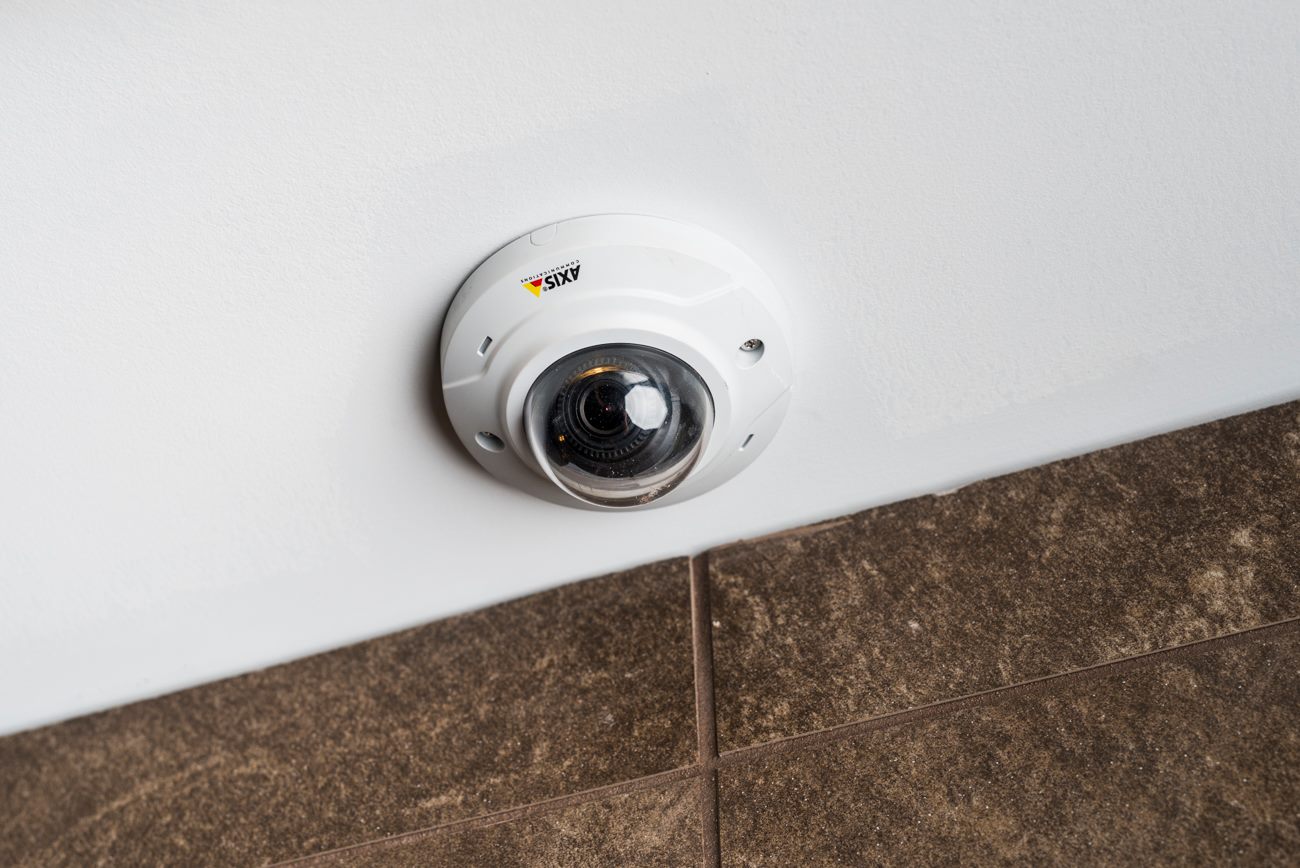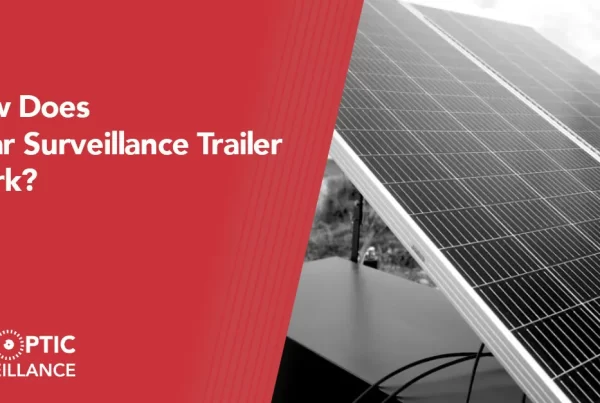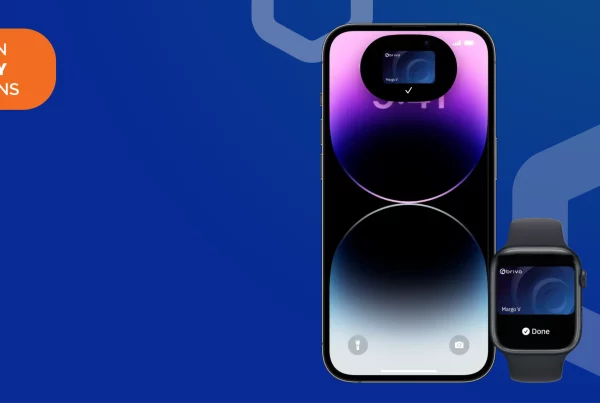COWORKING ACCESS CONTROL – As the number of coworking spaces rises, so does the demand for efficient security solutions for shared workspaces. Coworking has grown in popularity despite originally being a minority type of workplace due to the increase in demand for hybrid and remote work.
What is a coworking space or flexible workspace? COWORKING ACCESS CONTROL spaces provide members with everything they need to get their work done, including high-speed internet access, conference spaces, and other facilities, without the need for lengthy lease agreements. Members have access to a welcoming environment where they may concentrate on their job while mingling with other professionals who share their interests.
Yet, because to the nature of shared spaces, there is an increased danger of coworking security issues along with this popularity and convenience. Coworking spaces are vulnerable due to their convenience. Beneath all the bells and whistles, users expect to be safe and secure.
Let’s first examine the special problems and risks of this kind of shared office space before getting into how a company might maximize security for coworking spaces.

Coworking and flexible workspace security challenges
While shared offices might have numerous advantages, many people express security worries about coworking spaces. When it comes to security for coworking spaces, 48% of people feel that a lack of privacy is the biggest problem.
Digital Office Security
Coworking and flexible workspaces contain a variety of professionals, including freelancers, remote workers, start-up founders, and entrepreneurs, all utilizing their own devices. Together with the shared Wi-Fi connection and other cloud-based services, this can pose serious threats to data security.
In 2020, the FBI reported that since the commencement of the COVID-19 pandemic, cyberattacks had grown 400%. Analysts attribute a portion of the increase in cybercrime to the increasing number of people working remotely, including single parents and pregnant workers, who frequently use less secure equipment and networks.
As numerous businesses and professionals are each using a shared network connection to access their own servers, software, and databases, internet security in coworking spaces is particularly crucial. Operators must take the initiative to provide the strongest possible data and internet security in coworking spaces. Some options include:
ensuring that each user has their own username and password to access the network
Putting in place two-factor authentication
requiring all users to download an antivirus or malware application to their devices
Investing in managed network security solutions from reputable providers
establishing private, personalized Wi-Fi networks
putting in place security measures Members must concur and adhere to
soundproofing rooms for private conversations
Access Your Office with Smartphone
Discover why thousands of companies have Access Control System
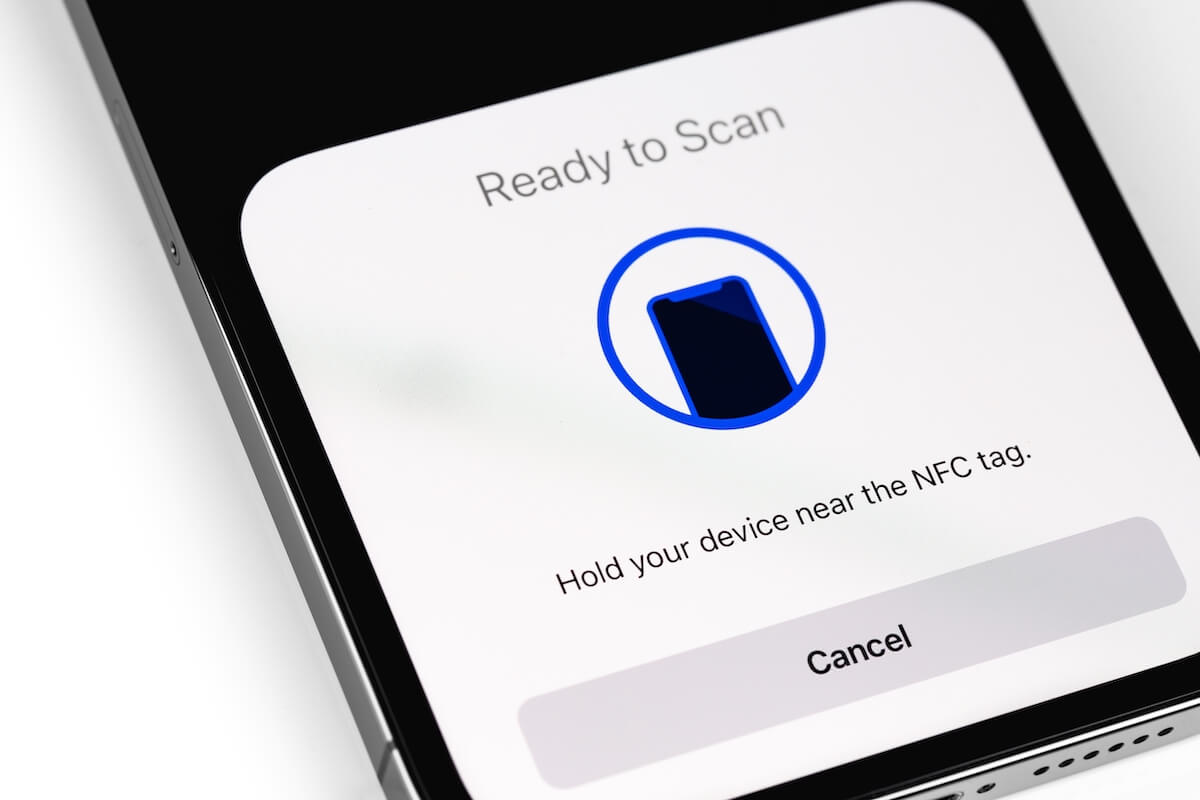
Building security for coworking space
Protecting the actual building and its occupants presents another security concern for shared offices. Among the particular difficulties are:
24/7 access – COWORKING ACCESS CONTROL that are accessible all the time create special issues in terms of physical security. Unauthorized entrance is more likely to occur when there are fewer staff members on duty after hours. As a result, these areas require well defined processes to help ensure access rights and safeguard priceless assets. This entails reducing the number of accessible entry points, placing restrictions on key distribution, designating off-limits zones, and performing routine inspections.
Multiple access points — Controlling access points correctly is crucial for ensuring the health and safety of any flexible workspace and its users. It is challenging to keep track of who enters and leaves the area or spot suspicious activity when there are multiple accesses, such as main doors, side entrances, and emergency exits. Installing keycard coworking access control systems or stationing employees at each entry point might be a dependable way to limit unwanted access and neutralize potential threats to lessen the security risk of this shared working environment.
High foot traffic — It may be challenging to keep track of who is present at any given time in coworking spaces and flexible workspaces due to the high foot traffic. Peak hours present a specific security concern for coworking spaces due to the increased flow of people entering and exiting the building. Investments in shared workspace security technologies, such as surveillance cameras or visitor management systems, can help coworking spaces keep track of the people coming in and out to maintain the safety and security of all users.
Coworking spaces are full with expensive equipment and assets that need to be protected. This applies to the usage of computers, phones, and other gadgets by members. With so much traffic, it’s not hard to slip in, take anything, and leave. Coworking spaces can be made more secure by implementing security measures like video surveillance, installing sturdy locks on all equipment cabinets, and having staff members on hand to keep an eye on the area.
Visitors – Potential clients, vendors, and other outside vendors frequently visit coworking spaces. Every unwelcome visitor could be a security risk. A visitor to the institution, for instance, might be there with the intent to steal data or resources. In order to track and register all visitors, as well as their contact information, visitor management systems must be in place. It can also alert residents when guests enter the area and monitor their behavior while they are there.
Cloud Based Access Control
Learn about cloud based access control system and its futures.
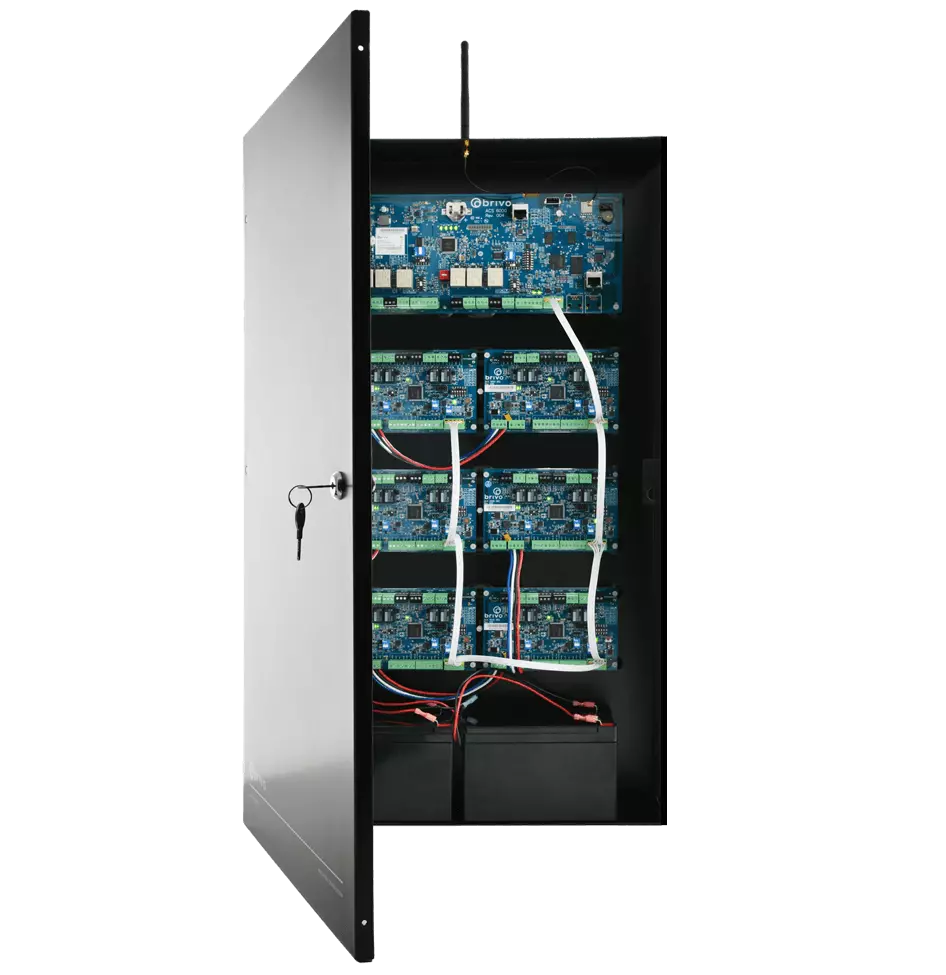
Enhancing coworking space security with access control systems
In order to protect coworking spaces from potential security threats, coworking access control solutions must be implemented. Electronic door locks and key card access systems are examples of coworking access control solutions that provide a safe method of restricting who is allowed to enter the area. Here are some advantages of access control security for coworking spaces and flexible workspaces:
Enhanced security – Access control solutions assist coworking space managers in making sure that only authorized people can enter and leave the building. These shared office security solutions thereby lessen the possibility of theft and unlawful entrance and shield the building from external security concerns.
Enhanced monitoring – Contemporary access control solutions for shared workplaces give operators in-depth knowledge of who enters and leaves a coworking space, enabling them to spot suspicious behaviour and thwart any security breaches. If unauthorized people try to enter the area, certain systems can even notify staff or the security staff at the shared workplace. They can also offer real-time monitoring to show who is currently present in the building.
High degree of adaptability and customization – The most recent coworking access control solutions allow shared office security administrators to develop a system that specifically addresses their requirements. These coworking security systems enable altering access restrictions, providing user permissions, temporary access, smartphone access, and establishing usage times to limit access to just authorized workers. They can also be combined with other technology, such as alarms and commercial security cameras.
Coworking access control solutions make it easier for users and staff to access the space by allowing quick and easy entry. This comprises automatic door locking and unlocking so users do not have to open or close them manually, simple and secure coworking access control with PIN numbers, keycards, or mobile credentials for mobile access, and both of these features. All of this adds up to a better user experience and a greater sense of security, both of which can be essential to the success of coworking spaces.
Improved management – Current access control systems provide a number of features that make the duties of coworking space owners and managers considerably simpler. For instance, remote capabilities, such as remotely giving or cancelling physical access, enable operators to make adjustments and even automate access without being physically present at the facility. They can also monitor occupancy rates in their shared workspace to maximize space use and learn more about customer preferences.
Join UPS Stores Using Access Control
With Cloud Based Access Control, UPS Stores can regulate and track who enters its facility for PO Boxes.
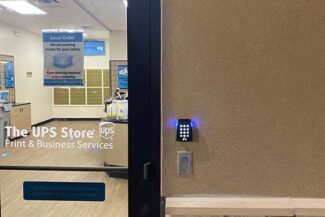
Types of coworking access control systems
Access control for coworking security safety coworking systems might take the shape of physical keypads or electronic door locks. For coworking access control systems, there are a few options:
Coworking Access Control Keypad
A practical solution for shared office access management is keypad entry systems. Mechanical keypad locks, which require users to press buttons to input a code, are one option for coworking space security operators. While being reasonably priced, they are prone to damage. Modern touchpad locks are an additional choice because they allow for remote access code updating and can be managed remotely through smartphone.
While keypads are an improvement over nothing, they have some serious flaws, such as a high degree of hacking risk and a lack of monitoring capabilities when everyone uses the same PIN. Also, members may unintentionally divulge their PIN to third parties, jeopardizing the security of the shared office for all users.
RFID shared office access
Radio-Frequency Identification (RFID) coworking and flexible workspace access control systems are effective for controlling access to shared office spaces. Whenever someone cancels their membership, they can be remotely cancelled, making it even simpler to make sure no unauthorized individuals access the space.
There are various disadvantages to this shared workspace security strategy to take into account. One reason is that members could share their credentials with unauthorized users, making it challenging to monitor who comes and goes from the area. However, since RFID cards are simple to duplicate, this can pose a serious security concern, particularly for credentials using antiquated encryption technologies.
Biometric cooperative access control systems
Biometric information, like as fingerprints or facial recognition, is used by these cooperative access control systems to provide entrance. Only people with the proper credentials can enter the area because this method does away with the need for keys and cards. Although this security system is quite effective, it can be overkill for coworking and flexible workspaces, unless specific areas demand high levels of protection.
For instance, biometric access control solutions for the staff could be useful in server rooms, data centers, and other areas of the coworking space that house sensitive information or equipment. Moreover, private offices or conference rooms used for private meetings or projects can be protected by biometric access control systems, which can also help with timekeeping if necessary.
Simpler techniques, however, provide a more workable answer in common areas like kitchens, lobbies, or workplaces. Also, because members of coworking spaces frequently change, collecting biometric data might be difficult.
Coworking access control without a key
The most convenience and security in coworking spaces are provided by keyless coworking and flexible space access. Users can quickly access the space without carrying specific keys or cards by using their smartphones as credentials. Coworking acces control the risk of hacking is considerably decreased by the strong encryption built into cellphones, and the coworking security system is easily expandable to meet changes in membership.
Coworking acces control with remote control
Coworking access control systems that are hosted in the cloud are also incredibly adaptable. They enable coworking space security managers to establish precise rules and regulations for various levels of entrance, such as granting members of particular membership tiers access to restricted areas or setting access hours for particular areas.
The cloud-based administration software also enables operators to control and adjust the system from any place. And because many of these platforms allow many locations, shared office security operators may easily manage access control for numerous coworking spaces or buildings in one location.
Coworking space security with turnstiles
For coworking and flexible workspaces with a lot of foot traffic, security turnstiles can be an excellent alternative. In order to control the flow of persons entering and leaving the area, these security measures only permit one person to pass through at a time. They also serve as a physical barrier to prevent potential security lapses or unwanted access.
Turnstiles can also be quickly linked with other coworking access control systems to provide an easy-to-manage, more thorough security solution.
Commercial security cameras for business
- Business security cameras with enhanced coverage and IR that improve situational awareness
- Video analytics with AI to find incidents
- Hours of video are easily sorted through by Video Search to locate a suspicious person or vehicle.
- Integrates with third-party ONVIF® compliant platforms
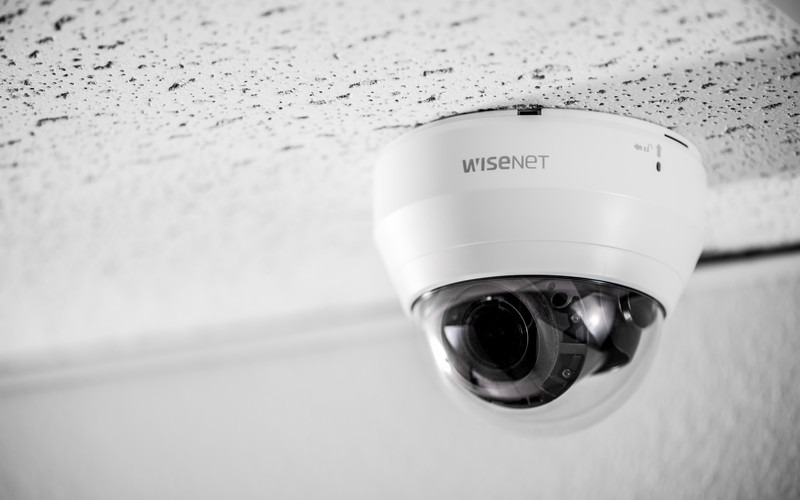
Investing in coworking access control systems
When it comes to securing flexible secure work space, access control solutions are a priceless tool. They may be individually suited to the needs of each shared workspace and offer an efficient way to keep track of who has access. Coworking access control systems can be made specifically for a building’s and its users using a variety of alternatives, giving shared office security operators lots of flexibility.
While choosing the finest security for coworking space, it is essential to take into account the costs involved, the potential for scaling, and how safe the shared office security system needs to be. In the end, these measures are essential for safeguarding users, property, and confidential data kept in a secure work space while yet allowing users to utilize the area freely.
Don’t risk legal
responsibilities.
Contact us right now to set up a consultation with one of our qualified security consultants. We will assist you in seamlessly navigating the complicated terrain of video surveillance laws. Your company deserves the greatest protection possible!
Have questions? We can help
Our security experts can help you implement the right security system for your business.



